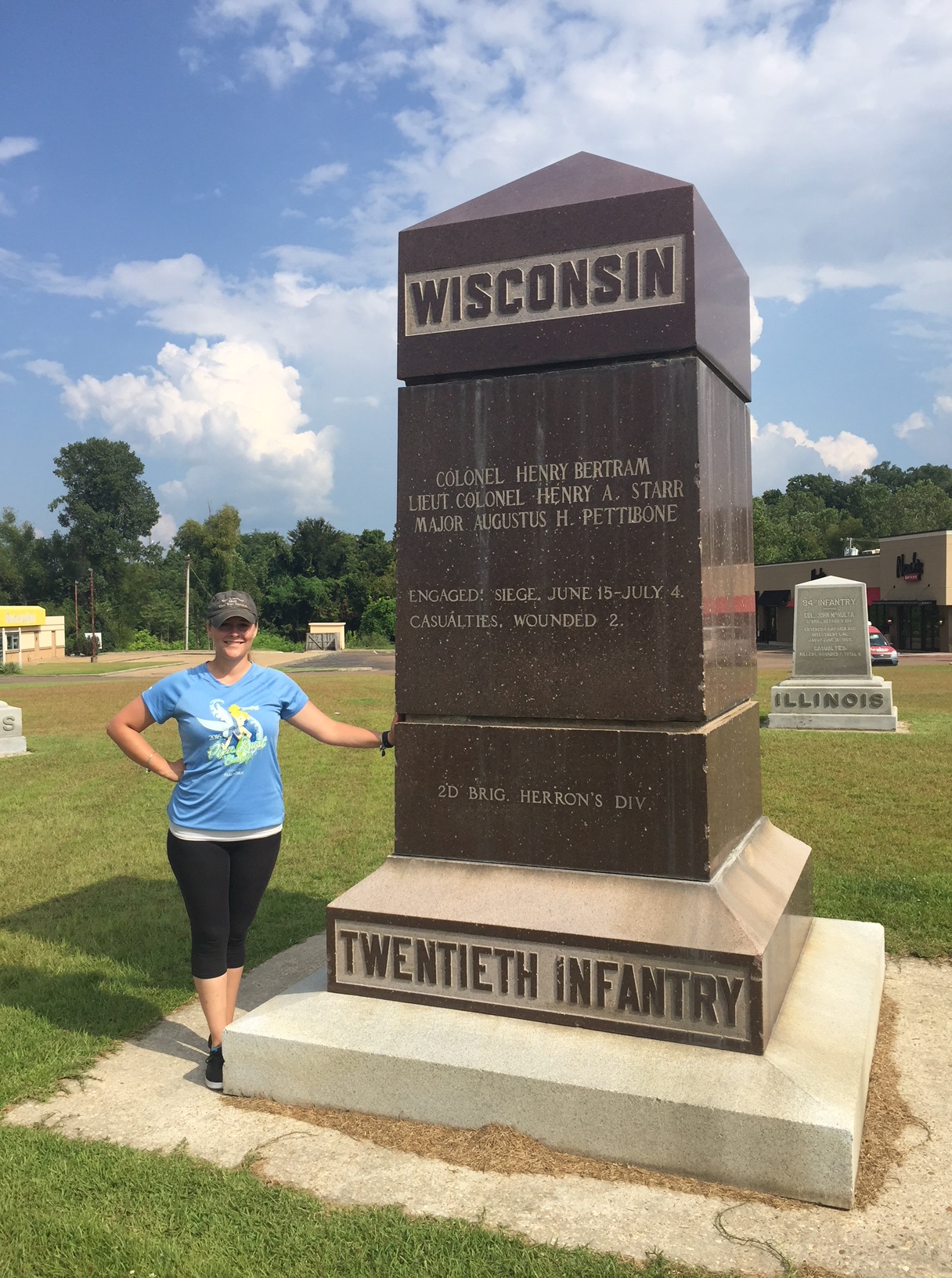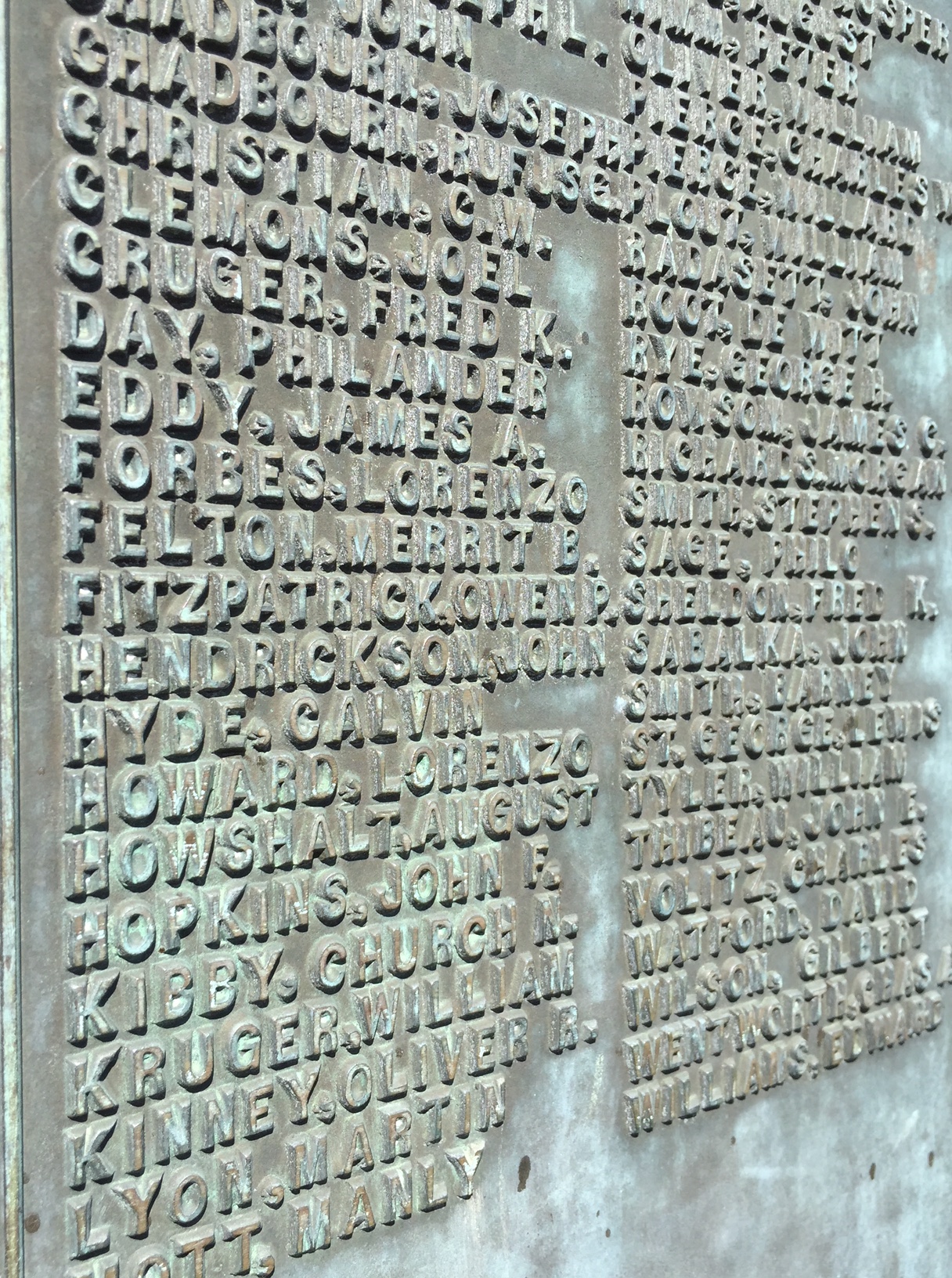Battlefield Markers & Monuments: Wisconsin Memorial at Vicksburg National Military Park
 Emerging Civil War welcomes back Paige Gibbons-Backus
Emerging Civil War welcomes back Paige Gibbons-Backus
Growing up in Wisconsin, I have always been interested in history, and while Wisconsin has some interesting Civil War history such as the Iron Brigade, “Old Abe,” and Camp Randall, it really was not a main focus. To get my Civil War history, I have always traveled east to places like Charleston, Richmond, or Gettysburg, but I never really spent much time learning about the western theater of the war.

I finally had my first opportunity on a recent trip to New Orleans and Mississippi in September 2016 when we stopped at Vicksburg National Military Park. Driving down the long, curvy park road surrounded by monuments, hills, and ridiculously tall grass, one monument really stuck out to me: the Wisconsin Memorial. The monument was dedicated in 1911, and compared to many of the other monuments along the park road, it is enormous; 122 feet in height, with four sets of stairs leading to a column with a bronze statue of “Old Abe”, mascot of the 8th Wisconsin Infantry, at its peak. Around the column stands various statues and reliefs, many of which focus on reconciliation. However, what stood out the most were the names of the 9,075 soldiers who had fought at Vicksburg, and among them, there with the 20th Wisconsin Company H, was Calvin Hyde, my fourth great-grandfather.
 There is always a sense of pride when seeing your ancestor’s name on a monument for his service, let alone connected to such an impactful event as the Civil War. I knew my ancestor had fought in the Civil War, but his whole service took place in the western theater, not in the more famous eastern engagements such as Fredericksburg, Manassas, or Gettysburg. Calvin Hyde resided in Ripon, Wisconsin (where my family still lives today) and enlisted in the Twentieth Wisconsin Infantry. His regiment was organized into service at Camp Randall, in Madison, Wisconsin (now largely part of the University of Wisconsin’s football stadium), and set out in August 1862. The regiment joined General Herron’s Brigade and left for Missouri on September 6th to participate in the campaign then being conducted against the Confederates by the Army of the Frontier. As a result, they took part in the battle of Prairie Gove on December 7th, 1862, then moved on to Springfield, Missouri. They were later transferred to Vicksburg on June 15th, 1863 and remained there until the surrender on July 4th, 1863.
There is always a sense of pride when seeing your ancestor’s name on a monument for his service, let alone connected to such an impactful event as the Civil War. I knew my ancestor had fought in the Civil War, but his whole service took place in the western theater, not in the more famous eastern engagements such as Fredericksburg, Manassas, or Gettysburg. Calvin Hyde resided in Ripon, Wisconsin (where my family still lives today) and enlisted in the Twentieth Wisconsin Infantry. His regiment was organized into service at Camp Randall, in Madison, Wisconsin (now largely part of the University of Wisconsin’s football stadium), and set out in August 1862. The regiment joined General Herron’s Brigade and left for Missouri on September 6th to participate in the campaign then being conducted against the Confederates by the Army of the Frontier. As a result, they took part in the battle of Prairie Gove on December 7th, 1862, then moved on to Springfield, Missouri. They were later transferred to Vicksburg on June 15th, 1863 and remained there until the surrender on July 4th, 1863.

Vicksburg was a vital part of the war effort in the western theater because it attempted to control the Mississippi River. Control of the river would allow the occupying forces to more easily transport supplies, soldiers, and wounded throughout the west. By 1863, Vicksburg was one of the last major Confederate strongholds on the Mississippi River. When two assaults on the once thriving town failed, General Grant decided to besiege the city. From May 18th to July 4th, 1863, the city was surrounded by more than 70,000 troops, trapping not only soldiers, but women and children as well who burrowed into caves in the hills for protection. After months of bombardments, shortness of supplies, and illness, the Confederates surrendered, transferring control of the town and the Mississippi River to the Union for the rest of the war.

Throughout the siege at Vicksburg, the 20th Wisconsin was situated on the extreme left flank of the entrenching forces, (in an area now off the battlefield park and surrounded by shopping centers). They did not see much action, but instead, their main duties consisted of picket duty and labor on the trenches. However, records from one commander, Colonel Bertram, reported that on June 23rd, a few men from Companies B and D were able to sneak close to the Confederate fire pits, capturing thirteen soldiers and killing one. For the rest of the men of the regiment, they labored or spent a lot of their time in the hospitals due to disease, including Calvin Hyde, who was hospitalized for some time due to dysentery. Despite this, the 20th Wisconsin fared well during the siege, only suffering two casualties: Peter Nimm, of Company H, and J. Champeny of Company C, who died in a hospital.
After the Siege of Vicksburg, the 20th Wisconsin headed west on several expeditions, including across the Rio Grande into Mexico, January 1864, and finished out their service in Galveston, Texas, performing garrison duties until their discharge July 15th, 1865. As for my ancestor, he lived the remainder of his days back in Ripon Wisconsin, doing what many do best in that state: farming.

Many would just see the Wisconsin memorial simply as another monument in a sea of monuments along the battlefield drive. However, the personal and family connections make it something incredibly special to me, not only because I am a history nerd, but because we have no remnants of Calvin Hyde’s Civil War days, and this was the first time I could see and touch sometime tangible from his service.
In October of 2017 I flew into Jackson, Mississippi, drove over to the Vicksburg National Military Park, before driving down to Lafayette, Louisiana. I reserved a guide a week early and drove back and stayed in Vicksburg, at a local casino. I mistakingly thought my ancestor was located near the Iowa Monument. The rangers were very help and informative. He was located near the USS Cairo exhibit. The guide took a picture of me next to the Iowa monument, in the middle of a cemetery. That was a life-long desire of mine to see where he was at the Battle of Vicksburg. Next year I hope to visit where he married his wife in “then” Prussia. There is a tour of Pomerania, where the Groeling lived before immigrating to the United States.